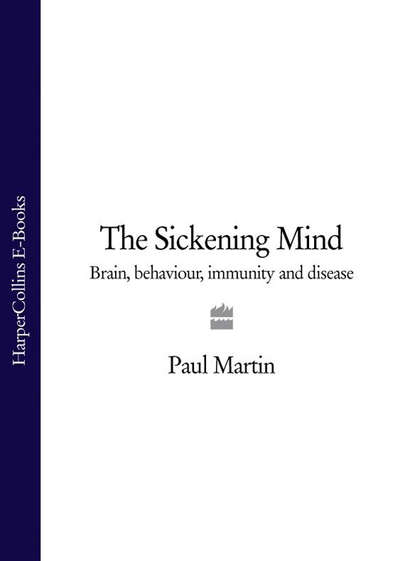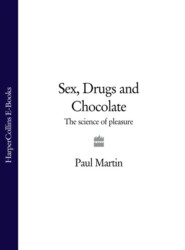По всем вопросам обращайтесь на: info@litportal.ru
(©) 2003-2024.
✖
The Sickening Mind: Brain, Behaviour, Immunity and Disease
Настройки чтения
Размер шрифта
Высота строк
Поля
Bereavement considerably heightens the risks of death and disease for the surviving partner. The risks are particularly great if the surviving partner is male: widowed men in their twenties have a mortality rate seventeen times higher than comparable married men. Moreover, the increased mortality rates among widowers persist for several years after the death of their wife.
One factor in this increased disease and mortality among the bereaved may be that they undergo changes in their immune function. A number of surveys have found that the death of a spouse is followed by measurable reductions in the immune function of the surviving partner.
In a pioneering 1970s study of this phenomenon, scientists at the University of New South Wales in Australia took blood samples from recently bereaved people and measured how responsive their lymphocytes were to stimulation by mitogens. The results were compared against the immune function of non-bereaved individuals who were matched for age, sex and other relevant factors. Several weeks after the death of their spouse the bereaved subjects’ T-lymphocytes were significantly less responsive.
Similar conclusions emerged from a prospective study which investigated the immune function of men whose wives had terminal breast cancer. During the weeks immediately following bereavement the widowers’ lymphocytes were not as responsive as they had been beforehand. In the majority of cases their lymphocyte function eventually returned to normal, but some men were still exhibiting reduced immune function a year later. The changes in lymphocyte responsiveness could not simply be explained away as by-products of behavioural changes which might also have followed bereavement, such as disrupted sleep, inadequate diet or increased smoking.
Bereavement is also followed by a drop in natural killer cell activity. Scientists have found reductions in the natural killer cell activity of women whose husbands have died from lung cancer within the previous few months and in women whose husbands are in the final stages of lung cancer.
The death of a partner is obviously not the only way in which marriages or long-term relationships are disrupted. Separation and divorce also result in the severing of ties and can have an effect on the partners’ immune function and health. Indeed, the health risks arising from separation and divorce are, if anything, worse than those associated with bereavement.
The stress which attends the loss of a partner is as old as the human race, but the twentieth century has ushered in new anxieties, such as the prolonged fear of exposure to dangerous radiation following a nuclear accident. Sadly, this is now a well-documented phenomenon. One of the most detailed scientific investigations of chronic stress has been conducted on people living near the damaged Three Mile Island nuclear power plant in Pennsylvania.
On 28 March 1979 the Three Mile Island reactor suffered a serious accident. Fortunately, the damage was contained and there was no significant release of radiation into the surrounding environment. However, the accident understandably generated great anxiety and distress among local inhabitants. In its immediate aftermath there was panic and confusion; saturation reporting by the media fanned the flames of fear that the reactor core would melt down and cause a massive release of radiation. Even after the initial crisis had passed, locals were painfully aware of the long-term clean-up operation and the continuing threat posed by the damaged reactor. Fear, anxiety and stress persisted for years.
Six years after the Three Mile Island incident American scientists measured the immune functions of people living within a five-mile radius of the damaged reactor. Compared with matched control subjects living further away, those living near Three Mile Island had markedly impaired immune systems. To be specific, they had fewer circulating B-lymphocytes, fewer natural killer cells, fewer suppressor/cytotoxic T-lymphocytes and a reduced immunological control over latent herpes viruses. And to round off the picture, they also showed a higher degree of anxiety and psychological distress; higher blood pressure; higher average pulse rates; and higher levels of the stress hormones adrenaline, noradrenaline and cortisol.
The Three Mile Island incident demonstrated quite clearly that, irrespective of whether or not there is a release of harmful radiation, the psychological stress which attends a nuclear accident can still have a major impact on mental and physical wellbeing. A further general conclusion from this and similar studies is that the immune system does not always adapt to long-term stress. Prolonged stress can produce a prolonged depression in immune function. It can also have some subtle effects on disease patterns.
The plot thickened. Three years after the original accident a team of researchers from Columbia University discovered an unusually high incidence of cancers among local inhabitants. In 1982 the incidence of all types of cancer among those living near the plant was 50 per cent above the historical norm. However, the cancer rate then started to fall, and by 1985 it had dropped below the long-term average. Meanwhile, cancer rates among the control subjects living further away from the plant had remained roughly constant. What was going on?
A number of fine minds were brought to bear on this problem. They concluded that subtle psychological processes lay at its root. All the evidence indicated that this peculiar blip in the cancer rates was not merely a consequence of exposure to radiation released from the damaged reactor. For a start, very little radiation had been released and the levels were too low to have caused a measurable increase in cancer. Moreover, there was no discernible association between the recorded levels of radioactivity and the pattern of cancer occurrences in the Three Mile Island area. The consensus among scientists was that the cluster of cancers around Three Mile Island could not be attributed directly to radiation.
Instead, it appeared that the transient increase in cancer rates probably stemmed from the high degree of psychological stress local residents were experiencing. Psychological surveys confirmed that the closer a subject lived to the plant, the higher on average their levels of anxiety and distress.
Psychological stress could have generated the apparent rise in cancer rates in two distinct ways. First, the local population had been bombarded with publicity about the potentially dire health consequences of the incident. They were more anxious about their health in general and particularly concerned about the dangers of radiation-induced cancer. It is therefore probable that they would have paid closer attention to their own health – especially to any possible symptoms of cancer – and would have sought medical attention at an earlier stage than individuals who were less concerned. This process would explain why cancer rates initially rose and then fell below the long-term average. The overall long-term incidence of cancer stayed roughly constant, but in the years immediately after the accident cancers were being diagnosed at an earlier stage in the disease – hence the blip.
Assuming this hypothesis is true, the Three Mile Island incident might actually have helped to save the lives of a few people who would have died had their cancer progressed undetected.
A second and more direct route by which the Three Mile Island accident could have influenced cancer rates is through stress-induced changes in immune function. The prolonged stress of worrying about the hazards posed by the damaged reactor might have led to an impairment in immune function, thus increasing locals’ susceptibility to cancer or, more plausibly, promoting the growth of existing, early-stage tumours.
The Three Mile Island incident was to prove a pale shadow of what took place seven years later in the Ukraine. The Chernobyl nuclear disaster in April 1986 resulted in vast quantities of radioactive material being released into the environment. Thousands of square miles were contaminated and the inhabitants exposed to dangerously high levels of radiation which claimed hundreds of lives. Stress contributed to the problem, making an appalling situation worse. The official scientific report produced for the United Nations International Atomic Energy Agency commented that there were very high levels of psychological stress even outside the contaminated regions.
Another nuclear accident that caused serious psychological and physical damage, albeit on a smaller scale than Chernobyl, occurred in Brazil the following year. In September 1987 an unsuspecting thief stole twenty grams of caesium-137, a highly radioactive isotope, from a disused clinic in Goiania, a town in central Brazil. Before the true nature of the theft was discovered, the strange substance which glowed in the dark had been handed around the neighbourhood. Tragically, 118 people were contaminated with caesium-137, of whom 4 died from the immediate effects of radiation. And, as at Chernobyl, the entire population of the surrounding area was confronted with the dreadful possibility that they might have been exposed.
Вы ознакомились с фрагментом книги.
Приобретайте полный текст книги у нашего партнера:
Приобретайте полный текст книги у нашего партнера:








